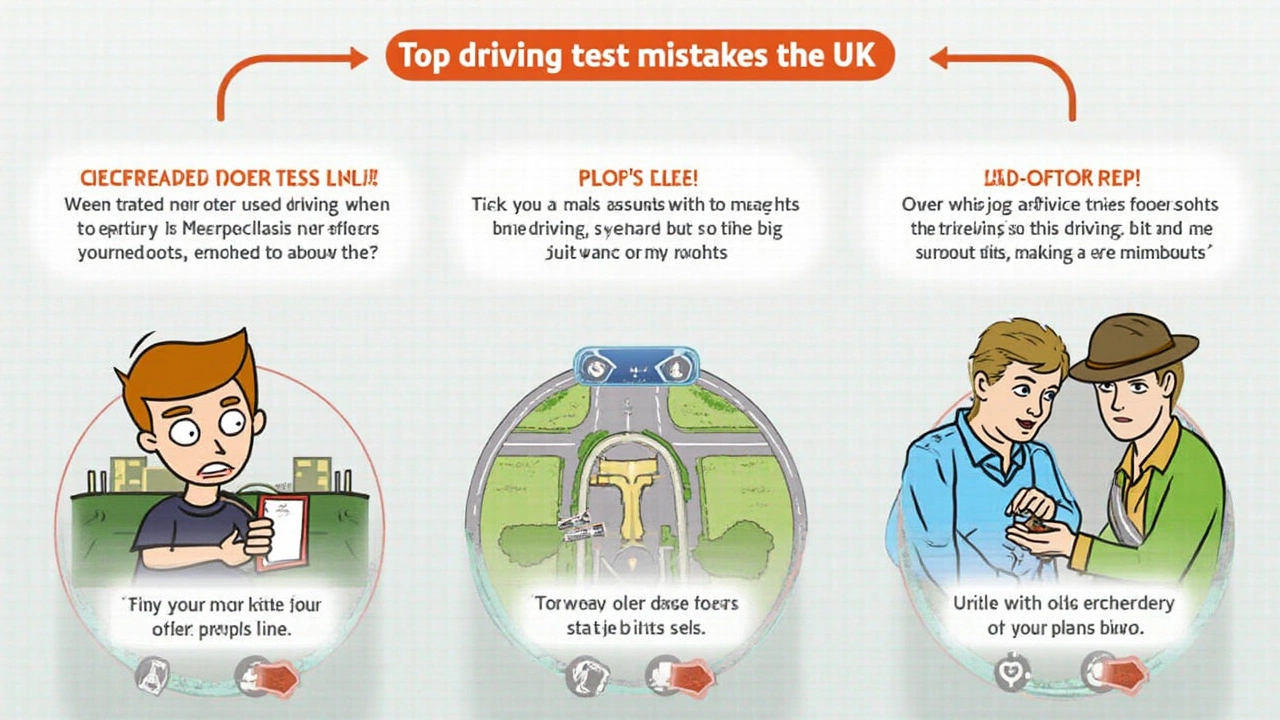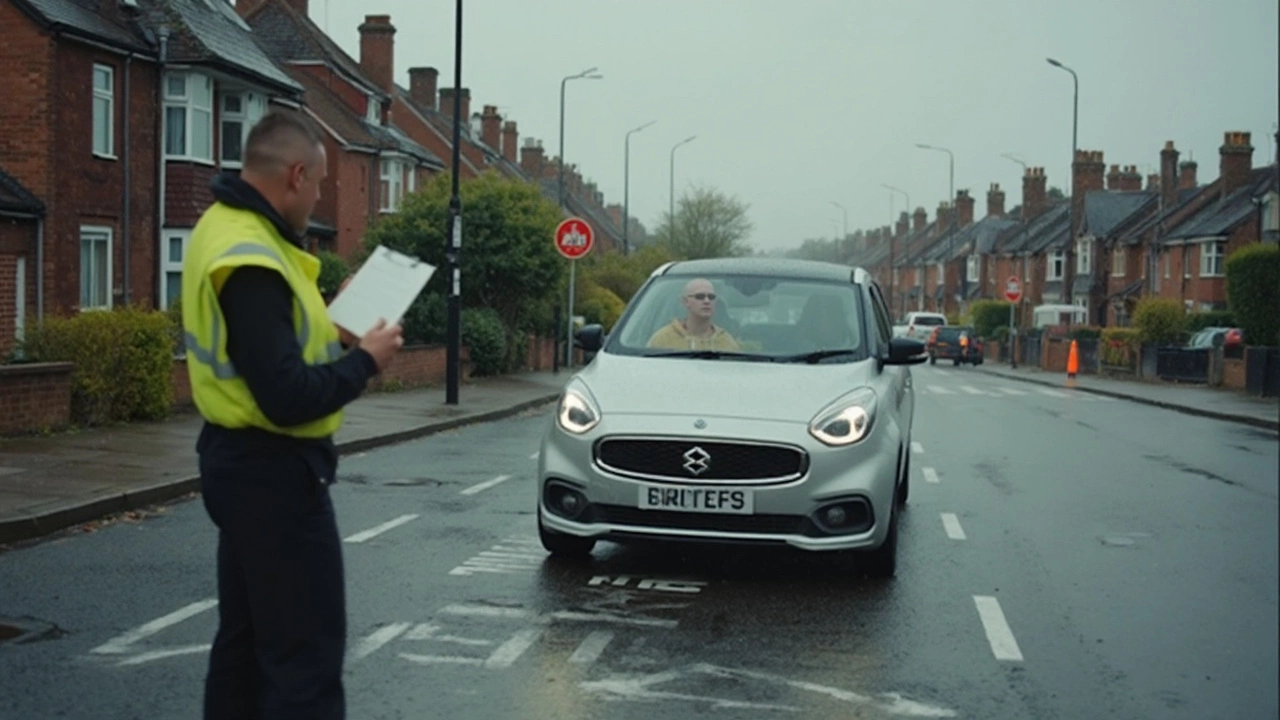Right from the moment you slide into the driver's seat for your test, nerves can take over. Your hands get a little sweaty, and every instruction feels like a pop quiz where the answer changes each second. But the difference between passing and walking away with your head down isn't always about confidence—it's usually about one glaring mistake. The driving world’s full of stories about people making a single wrong decision that turns the whole day sour. Some are as simple as not checking a mirror, others come from ignoring a road sign everyone sees daily. But miss one of these, and the examiner's pen moves straight to that big 'fail' box. Why are these mistakes such dealbreakers? Because they're not just errors—they’re signs that you might be dangerous, and that's one thing a driving examiner just can't let slide.
The Difference Between Minor and Major Mistakes
People think every little slip—like stalling the car or a bumpy gear change—counts as a major mistake. But that's not how the system works. Most exam boards split errors into two buckets: minor (faults that won’t put people in danger) and major (errors that can cause a crash or break the law). Forget to signal once? That’s usually minor. Forget to look before turning and nearly hit another car? That’s a major—an instant red flag for your fitness to drive. The stakes get even higher if you repeat a minor error several times, showing you haven't cracked a basic skill yet. One-off nerves won’t ruin your day, but making another driver brake suddenly or ignoring a stop sign absolutely will. Examiners are trained to watch not just your control but how you keep everyone safe. It’s their job to spot patterns: do you hesitate, speed up when you shouldn’t, or miss blind spots?
When you think about the most common major test mistakes, three things jump out: failing to stop at stop signs or red lights, not giving way at intersections, and unsafe lane changes. These aren't just technical; they're life-saving actions. Minor stuff—like a shaky clutch or missing a gear—shows you need practice, but you’re not putting lives at risk. The difference is huge: examiners can forgive nerves but not dangerous mistakes. What really throws people is that some rules seem small, but they scream 'risk' to someone with a clipboard. For example, rolling a stop sign is something people do daily without thinking, but during a test it means you missed a step that keeps the roads safe. The real line between minor and major is simple: if someone else has to take action to avoid you, or you break a law, that’s a major. Train yourself to think: is what I’m doing right now respectful of everyone else on this road?
The Most Common Major Mistakes and Why They Matter
If you ask an examiner or a driving instructor, the top major mistake is failing to observe properly—especially at intersections. Instead of checking all mirrors, blind spots, and then committing, some people freeze or only glance quickly. A famous 2022 UK study found observation faults accounted for over 25% of all instant fails. Examiners want to see an active scan: mirrors, signal, maneuver. Miss that rhythm, and you might miss something life-changing—like a cyclist sneaking up on your left. Another big fail comes from not giving way. Maybe a car’s moving fast, and you hope to squeeze in front—no dice. Examiners see that as taking a gamble with someone else's safety. They don’t care if you were two seconds ahead or behind; if there’s any risk, they call it.
Red-light running is another mistake that stops the test. Sometimes people get flustered by an amber and speed up to 'make it.' Examiners are trained to watch your reactions around lights—not just that you stop, but that you stop in time and at the right line. If you blast through, they’ll end the test right there because it’s a real-world accident waiting to happen. Incorrect lane use is also a classic. Imagine you’re heading into a roundabout but pick the wrong lane or straddle both. That’s a fail because you’re not showing control or good judgement, which is vital in busy traffic. Improper speed—going too fast for a school zone or too slow on open roads—gets noticed because it breaks either the law or the flow, both bad signs. When you add it all up, most instant fails happen because the examiner sees that you’re not aware of what’s happening around you, or you’re not following the big non-negotiable rules.

Real-Life Examples and Surprising Truths from Instructors
Here’s where things get a little embarrassing—almost everyone knows at least one person who failed by doing something silly. One instructor in Sydney remembers a student who spent weeks practicing parallel parking perfectly. On the big day, nerves hit, and he forgot to check the rear-view mirror as he reversed. There was no other car, but that single missed mirror check was enough for an instant fail. Examiners will spot these details, even if you can recite every road sign from memory. Another story comes from Toronto: a driver panicked when an ambulance siren blared behind her. Instead of calmly pulling over, she froze in the lane. That split second made the examiner end the test—emergency vehicles always get priority, and knowing what to do under pressure is part of being a safe driver.
Some mistakes are so routine you might not realize they’re serious. Instructors often see people rolling through stop signs if they think no one’s watching—which blows the test every time. There are stories of people going just 5km/h over the limit on a downhill stretch, thinking it wouldn’t matter. But examiners carry speed guns, and they notice. There are also those students who don’t understand right of way at four-way stops. A 2023 survey in the U.S. said that nearly 30% of test failures in some states come from faulty intersection handling. For instructors, it’s about trust: if you can show calm, steady control and respect for every rule—not just when someone’s watching—they know you’re ready.
Tips to Avoid Major Driving Test Mistakes
The best way to dodge those major mistakes is to think like an examiner. Sound tricky? Actually, it isn’t. Examiners follow a checklist, and you can too. Before moving off, check all mirrors plus your blind spot—even exaggerate the head turn a bit, so the examiner sees you’re not just sneaking a look. When arriving at any sign, especially stop signs, halt completely. Count two seconds before moving—this shows you’re not rolling through by habit. For intersections, scan both ways, look into driveways, and always ask yourself: do I have right of way, or should I yield?
Stay extra alert in school zones, roadwork areas, and pedestrian crossings. Slow down without needing to be told. If you’re unsure of a lane or direction, it’s better to pause briefly than barrel through. Get comfortable with the route by practicing at the same time of day as your test—that way you know what traffic’s like, where the busy spots are, and who the usual hazards are, like early morning cyclists or buses. One tip: chat quietly to yourself during the drive—run through each step so your brain doesn’t go blank: 'Mirror, signal, move.' It sounds cheesy but hearing the steps keeps your mind sharp when nerves kick in. Never trust that just because you practiced a hundred times you’ll remember everything under pressure—make it automatic. The people who pass usually aren’t the best natural drivers—they’re the ones who’ve trained these habits so well even stress can’t knock them off track. Getting the driving test mistakes in check isn’t about doing it perfectly, it’s about doing it safely and consistently—every move, every time.

